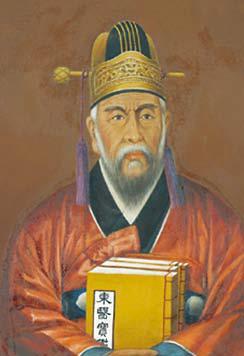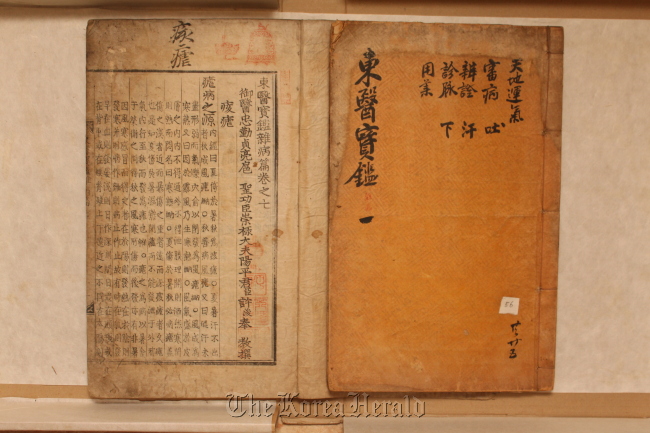English version of ‘Donguibogam’ to be published this year
2013-01-07 19:54
An English translation of a 17th century Korean medical textbook will be published this year, according to the Korea Institute of Oriental Medicine on Monday.The English version of “Donguibogam” is scheduled to be released around September this year. This year marks the 400th anniversary of the book’s publication.
“The publication of ‘Donguibogam’ in English will be a great opportunity to promote the excellence and the value of Korean medicine to the world,” said an KIOM official who wished to remain anonymous.
 |
| Heo Jun |
The institution will distribute the translated version to organizations and research centers around the world in order to raise awareness about Korean medicine.
Started as a government-funded project in 2008, the drive has seen the completion of 23 volumes so far. A 150-page translation summary of the 25 volumes was published in 2008 as the translation project was initiated.
According to the KIOM’s Global Donguibogam Center in charge of the translation project, the complete translation will be released when the World Traditional Medicine Expo opens in September in Sancheong, South Gyeongsang Province.
“The translated version of the book also celebrates its inscription as a UNESCO cultural heritage text in 2009. Hopefully, the availability of the translated version will be of advantage when getting the book registered on the UNESCO Intangible Cultural Heritage list. We also expect the book to become influential in the global Oriental medicine industry,” she said.
 |
| The original “Donguibogam” (KIOM) |
 |
| The English version of “Donguibogam” (Yonhap News) |
“Donguibogam” was included in the Memory of the World Register in 2009. The book is an encyclopedia of medical knowledge and treatment techniques compiled in Korea in 1613 by Heo Jun, an acclaimed court physician, and other medical experts of the royal court.
The translation project was led by a group of Oriental medicine doctors, scholars of Korean classics, Chinese characters and English language supervisors under the management of Hamsoa Oriental Medicine Clinic in 2009 and Kyung Hee University Korean Medicine School from 2010-12.
“Now we have basic documents that we can use to globalize Korean medicine,” Kim Nam-il, dean of the Korean Medicine School of Kyung Hee University, told the press.
“The medical book has not only medical information, but also cultural, philosophical and historical information that holds significant value in the academic world. It will be great research material for scholars as well,” he said.
According to experts, “Donguibogam” has helped shape Eastern medical culture across Asia and about 80-90 percent of Korea’s Oriental medicine doctors still use the book as a reference.
By Lee Woo-young (wylee@heraldcorp.com)


